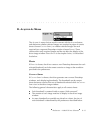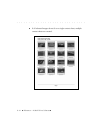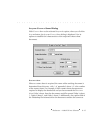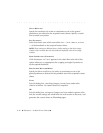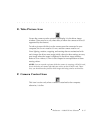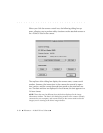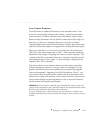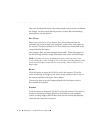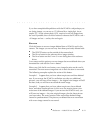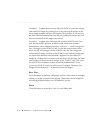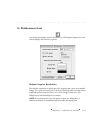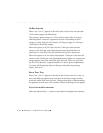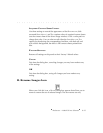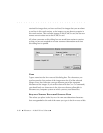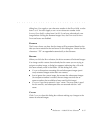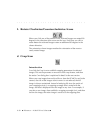
. . . . . . . . . . . . . . . . . . . . . . . . . . . . .
Reference — Kodak Driver Software 8-21
If you have unexplainable problems with the PCMCIA card (perhaps you
are losing images, or you see an “E” followed by a single digit, for ex-
ample “E2,” on the camera back LCD), acquire or save all images from
the card if possible, then click this button to reformat the PCMCIA card —
all images are lost — and try the card again.
RECOVER
Click this button to recover images deleted from a PCMCIA card in the
camera. The images you recover may have been previously deleted with:
The DELETE button on the outside of the camera back.
The DELETE button in the software driver image window.
The ERASE button on the CAMERA CONTROL dialog box of the software
driver.
You cannot use this option to recover images that were deleted when you
formatted the card with the FORMAT button.
When you click the R
ECOVER button, every image location on the card is
examined. The most recent image that was in each location is recovered.
The following examples explain the action of this button.
Example 1.
Suppose that you have taken ten pictures and then deleted
one. If you recover the PCMCIA card before you take any additional
pictures, you will have all ten images — the original nine images will still
be there, and you will have recovered the tenth image.
Example 2.
Suppose that you have taken ten pictures, have deleted
three, and taken another picture. In this case, the newest picture over-
writes one of the deleted images. If you recover the PCMCIA card, you
will have ten images — the nine original images, plus the latest picture
you have taken. The exact location of the overwritten deleted image
cannot be predetermined. The picture you deleted that was overwritten
with a new image cannot be recovered.



